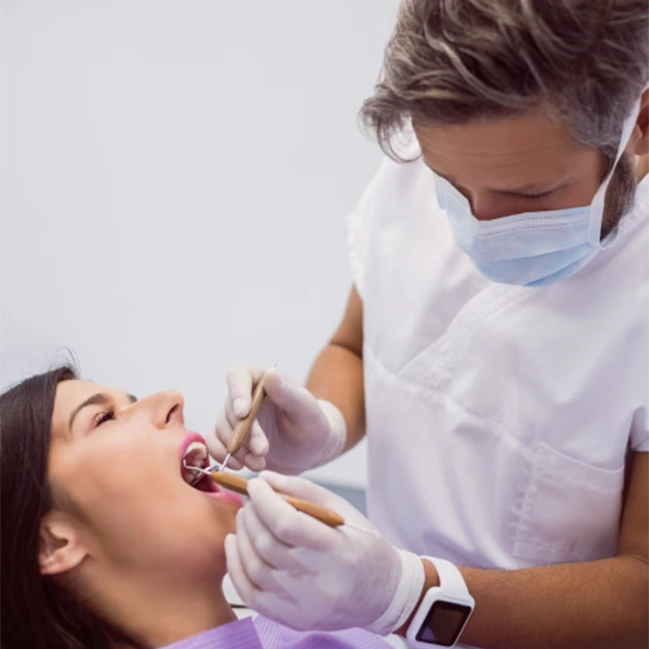Can an Infected Tooth Be Extracted?
Can an infected tooth be extracted? Whether an infected tooth can be removed depends on the risk of infection spreading and the patient’s overall health condition. Although antibiotic treatment is initially used to control the infection, in emergency cases, immediate extraction may be necessary.
Can an infected tooth be extracted? The decision to remove the tooth varies based on the patient’s specific condition. If the abscess is at an advanced stage or the pain is unbearable, drainage of the infection is performed before extraction. Before any intervention, consulting a specialist dentist ensures the most accurate decision is made and an appropriate treatment plan is established.
Causes of tooth infections
What Happens If an Infected Tooth Is Extracted?
Gum inflammation occurs when the surrounding tissues of the tooth become infected. If left untreated, it can lead to tooth loss over time.
Whether an infected tooth should be extracted is determined by a thorough examination and evaluation by a specialist dentist. Generally, dentists prefer to control the infection before extraction to prevent it from spreading to surrounding tissues, which could lead to more serious complications.
The extraction of an infected tooth must be performed under the right conditions and at the appropriate time. If these conditions are not met, various health complications may arise.
To ensure a smooth healing process, additional precautions may be recommended. For instance, pain and swelling may occur after the extraction. To minimize discomfort, applying a cold compress and using pain relievers prescribed by the dentist can be beneficial.
If there is a risk of infection at the extraction site, the dentist may prescribe antibiotics. These medications prevent the spread of bacterial infections and reduce the risk of complications following the extraction.
Another common concern is what helps with a dental abscess before or after an extraction. If an abscess develops, antibiotics, pain relievers, and antiseptic mouth rinses recommended by the dentist can help manage the condition.

When Should an Infected Tooth Be Extracted?
The decision to extract an infected tooth depends on various factors. If the tooth has severe decay and cannot be saved through a root canal treatment, it may need to be removed to prevent the infection from spreading.
A severe dental abscess is another reason for extraction. If the pain and swelling persist despite antibiotic treatment and abscess drainage, the tooth may need to be removed.
If an infection in the root tip persists even after a root canal treatment and the tooth cannot be saved, extraction is required.

If the infection has spread to the jawbone and cannot be controlled, removing the tooth becomes necessary.
Teeth that have lost their supporting tissues due to gum disease or are loose, as well as fractured or severely cracked teeth, may require extraction to prevent further complications.
If an infection around the tooth has led to cyst formation and is damaging the surrounding tissues, tooth extraction may be needed to control the infection. If an impacted wisdom tooth frequently causes infections in the surrounding area, its extraction may be necessary. This is often the answer to the question, should an infected wisdom tooth be extracted?
The final decision on infected tooth extraction should be made based on a dental examination and radiographic evaluation by a professional dentist.
Post-Extraction Care for an Infected Tooth
Following an infected tooth extraction, certain measures must be taken to ensure successful healing.
One of the most important aspects is controlling bleeding. The gauze pad placed by the dentist should be kept in place for at least 30-45 minutes. The first 24 hours are crucial for allowing the blood clot to remain intact. Actions such as spitting or rinsing should be avoided, as they may dislodge the clot.
Applying a cold compress can help reduce swelling, and following the dentist’s pain relief recommendations can minimize discomfort. Avoiding smoking and alcohol, as well as paying attention to diet, are critical during the healing process. Proper oral hygiene should also be maintained, but brushing should be done carefully, avoiding the extraction area on the first day.
If severe pain, foul odor, fever, or excessive swelling occurs, it is essential to consult a dentist immediately.
For a detailed evaluation and professional dental care, you can contact Elşen Yusufoğlu clinic.
